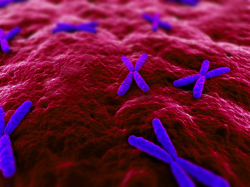A regulatory map of the human X chromosome
Harmful X chromosome gene mutations tend to be maintained in the population because the reproductive fitness of carrier females is generally not affected. However, sons that inherit the mutant chromosome will be affected by the mutation. More than 90 genes located in the X chromosome are currently implicated in the development of X-linked intellectual disability (XLID). Sequencing of X chromosome genes in affected patients indicates that nearly half of the mutations lie outside the coding regions. Australian and European scientists teamed up under the EU-funded 'Genomic regulatory systems of human X-linked neurological diseases' (NEUROXSYS) project to generate a picture of the expression and the regulatory sequences of X-linked genes known to be involved in the development of intellectual disability. To this end, the consortium used computational analysis to establish a database of the X chromosome containing all highly conserved non-coding elements (HCNEs). Over 100 000 possible enhancers were identified, 12 600 of which targeted a known XLID gene. Scientists came to the conclusion that a rearrangement occurring between an enhancer and its target gene would separate the two elements, causing the target gene to be deregulated. Over 200 highly conserved sequences located in the vicinity of genes involved in human neurological disorders were functionally analysed and exhibited a tissue-specific gene expression pattern in the zebrafish brain. Interestingly, not all enhancers were active in the adult brain, while others corresponded to regions containing adult neural stem cells. NEUROXSYS partners also sequenced a large number of putative regulatory sequences and all coding genes in 48 families with XLID and found interesting mutations in HCNEs. Understanding the functional significance of these mutations will provide invaluable information on XLID and will aid the future development of genetic tests.







